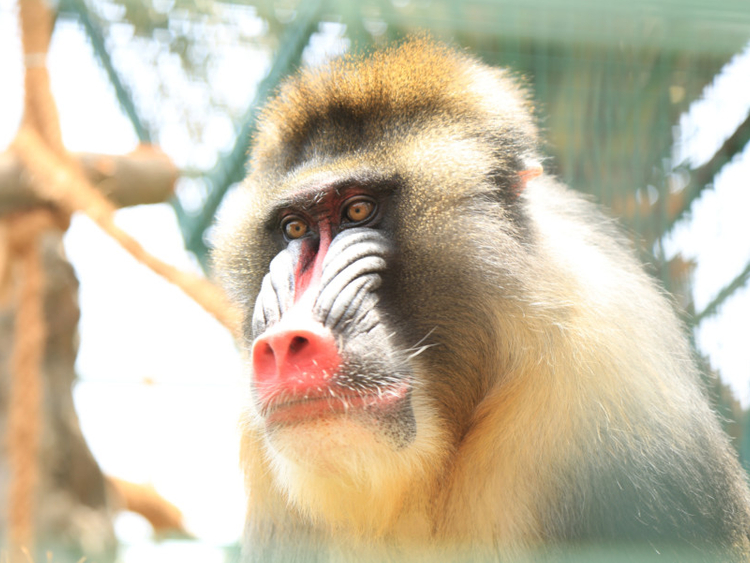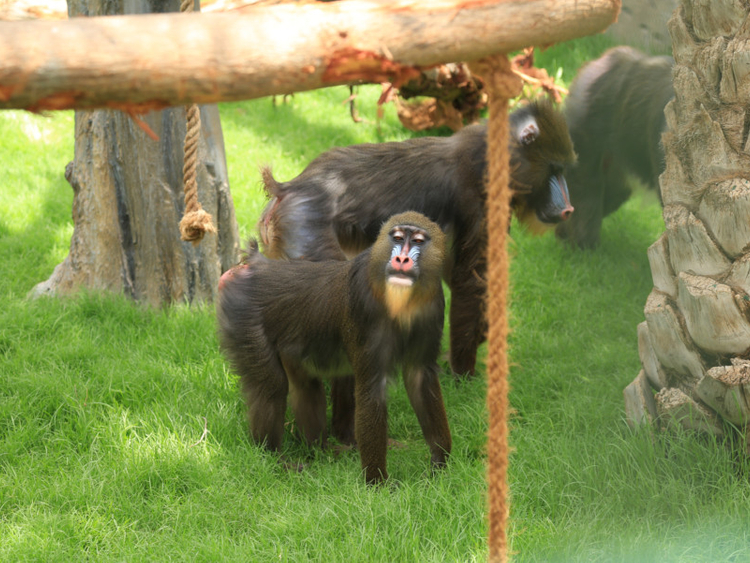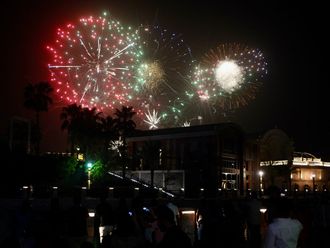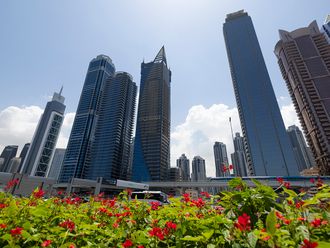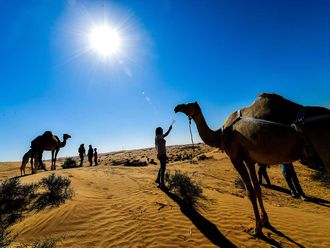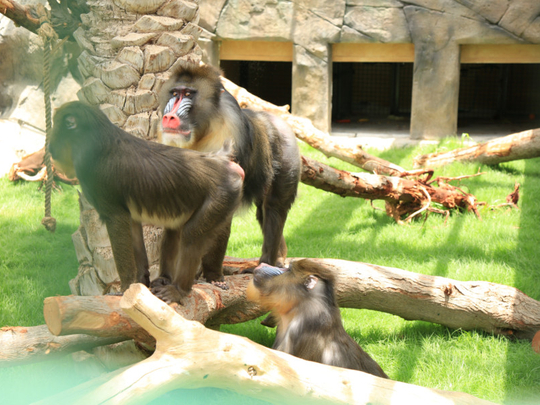
ABU DHABI The Emirates Park Zoo & Resort in Abu Dhabi has welcomed three new mandrills – African equatorial monkeys related to baboons and drills.
The primates, two males, 17 and 9, and a female, 14, arrived in the capital three weeks ago from the Canary Islands in Spain. They are on public display since Monday.
“They are exploring their new surroundings and look happy. They are in good health and their vaccinations are up to date,” Walter Julio Tavares, zoo manager, told XPRESS.
He said the monkeys are already a hit with zoo visitors. “They are the most colourful monkeys in the world and people are always fascinated by their appearance.”
The Mandrills have an olive green or dark grey pelage with yellow and black bands and a white belly. The monkeys have an elongated muzzle, red nostrils, yellow beard and white tuffs.
More to come
“The male monkey is one of the heaviest in the world and the 17-year-old male weighs 50 kilos,” he said, adding that a younger female would be sourced in the coming months.
Tavares said Abu Dhabi’s hot weather will not be an issue for the monkeys as they are used to humid conditions. “We have air-conditioned rooms,” he said.
Mandrills under human care can live up to 31 years, outliving their counterparts in the wild which have a lifespan of 25 years.
The zoo, located near Shahama, is open through the week. From Sunday to Wednesday it is open from 9am to 8pm and on weekends from 9am to 9pm. Entrance fees are Dh30 per person from six years onwards, Dh20 for children between two and five.
They are usually found in southern Cameroon, Gabon, Equatorial Guinea and Congo. These monkeys live in tropical rainforests and forest savanna mosaics. Mandrills live in groups called hordes and have an omnivorous diet consisting mostly of fruit and insects.



